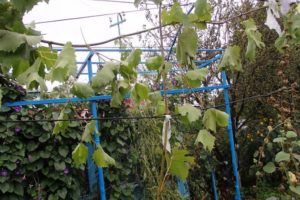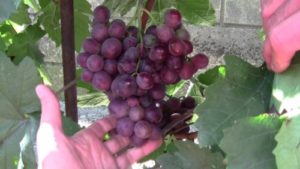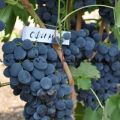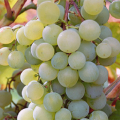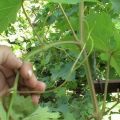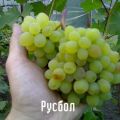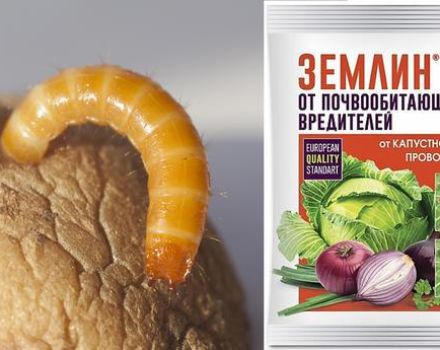Description and characteristics of the raisins grape variety Century, cultivation and care
The Century grape variety has a long history of cultivation throughout the world. A distinctive feature of the berries is the complete absence of seeds, which determines its belonging to the variety of raisins. Garden culture has proven itself from the best side, as it has many worthy qualities that you should learn about before the formation of plantings.
Breeding history of the variety
The homeland of the Century variety is the USA, California, the first experiments on its creation were carried out since the 60s. Kishmish was officially recognized in the 80s and was the result of crossing two varieties - Emperor, Pirovano 75.

Pros and Cons of Grapes Century
The advantage of the hybrid variety is that it is undemanding to growing conditions. Many gardeners consider the stability of the crop and its high indicators to be the main advantage. The positive qualities include:
- stress resistance, the ability to withstand difficult growing conditions;
- good immunity to grape diseases;
- decent taste of berries;
- attractive appearance of fruits and their ability to endure conditions of long-term transportation;
- frost resistance.
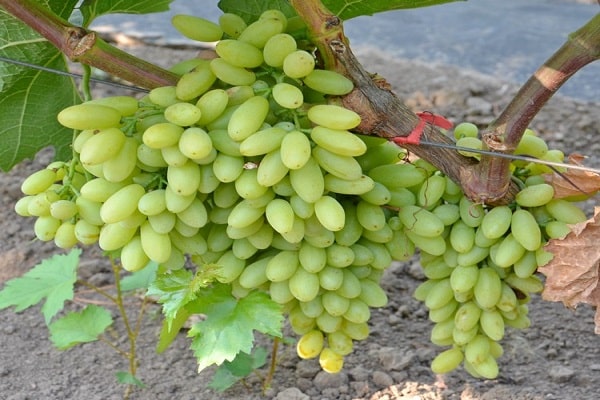
Grape berries are a universal variety, as they can be consumed fresh and dried. At the same time, raisins are a valuable source of nutrients in winter or when fresh fruit is insufficient. The disadvantage of the variety is the inability of the berries to maintain their qualities during long-term storage.
Biological features and characteristics
The century refers to table grapes with an average yield of fruits. The ripening period of the bunches is 120-125 days.
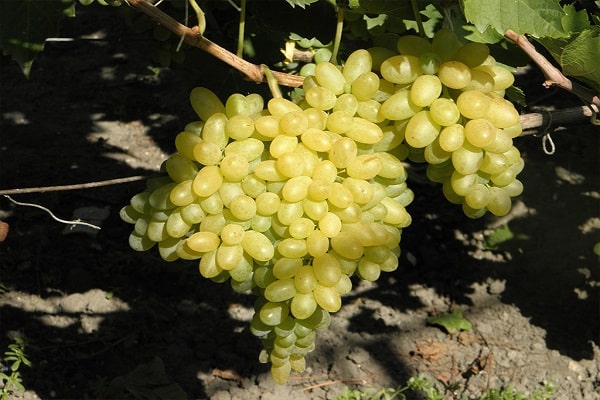
Vine growing region
Despite the fact that the variety was bred for the first time in the United States, over the past decades it has found widespread distribution around the world. Today it is actively grown in the CIS, Chile, Argentina and South Africa. In our country, it has not passed the official variety trials, therefore, it is not yet in the register of breeding achievements.
A century recommended for cultivation in the central and southern regions, since in the northern regions it does not have enough heat to ripen, and it cannot withstand excessively low temperatures.
Frost resistance
The century belongs to frost-resistant types of crops. The eyes are able to survive when the temperature drops to -25 C. Despite its ability to tolerate cold, it is recommended to cover the plant in cold regions. For plants under 6 years old, it is imperative to provide a protective structure.
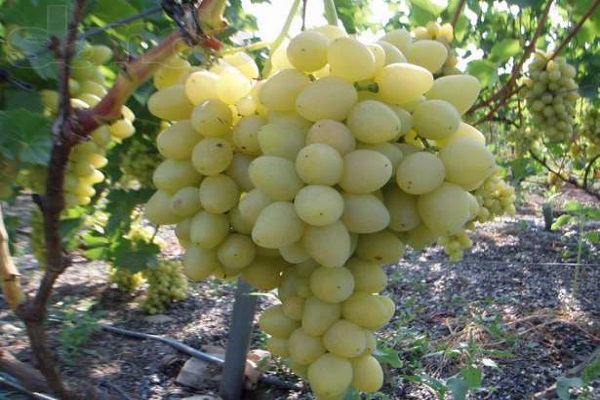
Immunity to infections
The garden culture has a decent resistance to grape infectious diseases. The variety is distinguished by its high ability to withstand the most dangerous enemies of the grape - mildew, oidium.
External parameters of the bush
The description of the variety emphasizes that the Century grape variety needs support, as it forms strong, vigorous shoots. In the first year, they can reach a height of several meters. The plant is characterized by a strong vine and short internodes, which contributes to its stable retention.

Pollination of a plant
The plant forms bisexual flowers. In connection with this feature, the Century does not need a number of plantings of other grape varieties.
Harvest amount
The berries are formed into large clusters, the weight of which reaches 700 g. The fruits themselves gain weight up to 10 g, which is a worthy indicator for seedless varieties.
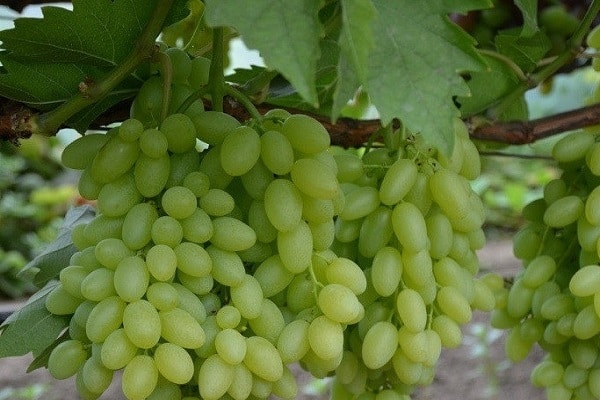
Grone size and berry flavor
Berries are oval-shaped, white-yellow in color, formed into large clusters, which acquire a conical shape. The pulp of the fruit is fleshy and has a harmonious taste. At the moment of full ripening, they have a pleasant nutmeg shade. There is a complete absence of seeds inside the grapes. The sugar content in the juice is 13%, the acidity is 6 g / l.
Landing technology
Harvesting will take a certain amount of time and go through certain stages, including choosing a seedling, preparing the soil for planting, caring for the plant and a successful winter. The first return of fruits can be expected in the 3rd year, so a certain cycle of work will need to be completed annually.

As a place for permanent cultivation, sunny areas are suitable; in shaded areas, yield indicators decrease significantly. Planting can be done in spring or fall. Before planting, the roots of the plant are disinfected and treated with growth stimulants for better survival. Planting is formed in a straight line, keeping the distance between seedlings and rows. Planting along the walls of buildings will protect the plant from the wind, but at the same time an indent of 1 m is required from the foundation.
When planting in heavy soil, the hole must be at least 80 cm deep and 60 cm wide. Drainage will help to increase the properties of moisture transmission and air permeability of the soil, for this they use crushed stone, broken brick or sand. Mineral fertilizers and humus are added to the hole on top of it. When planting, the root shoots are evenly distributed, covered with fertile soil, tamped and watered.
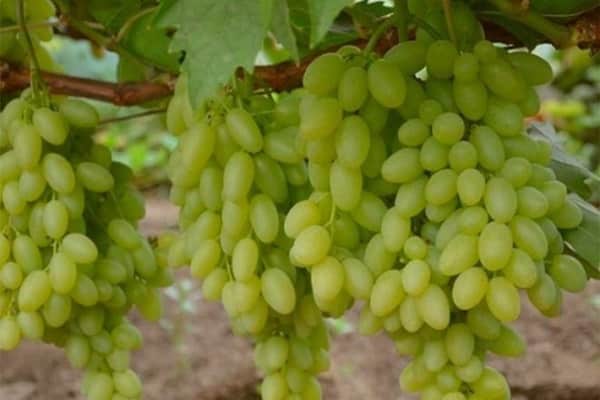
Growing and care
The quality of growth and fruiting of grapes directly depends on compliance with the rules of agricultural cultivation. The main requirements relate to providing soil nutrition for planting, pruning and timely watering.
Irrigation
The plant requires sufficient watering. Today, irrigation is carried out by drip, aboveground and underground methods. Particular importance is attached to autumn and spring watering, which contribute to the active growth of shoots, as well as during the budding period for better berry formation.
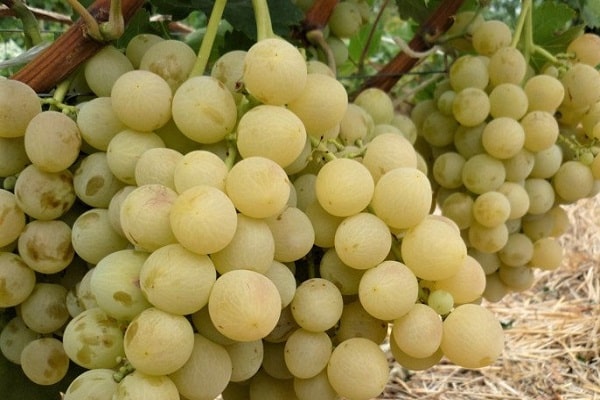
Foliar and root feeding
Grape shoots are fast growing and require sufficient nutrients to maintain. The soil is enriched with organic fertilizers in the form of manure and compost, as well as mineral additives in the form of potassium salt and superphosphate.One of the best fertilizers for grapes is considered to be bird droppings, which contain almost all the elements necessary for plant growth.
Organic fertilizing is required to be applied once every 2 years. When using chemicals, it is important to follow the manufacturer's recommendations. Nitrogen fertilizers are used in the spring to stimulate growth, and in the fall, potash fertilizers or wood ash are used.

Pinching and shaping the vine
The plant needs periodic work to trim the bushes. For every 6 m2 there should be no more than 24 shoots. They adhere to medium pruning, in which 6-8 eyes are left. Pinching in young plants helps the growth of the bush and makes it stronger, in some cases it helps for faster fruit ripening.
Treatment and prevention of diseases and pests
Most often, plantings suffer from the leafworm, which, after penetrating under the bark, begins to "devour" the plant from the inside. Targeted drugs are used to combat the pest.
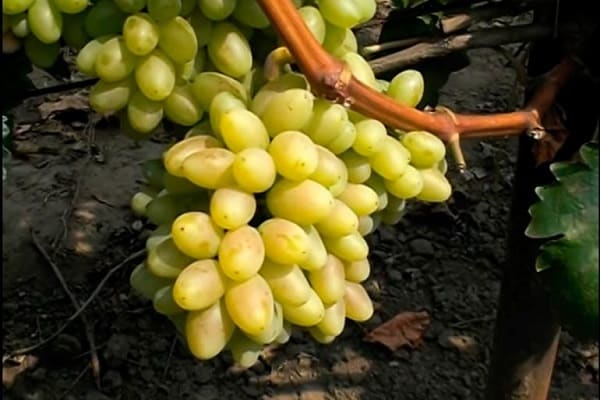
Another dangerous pest for grapes is phylloxera, which can multiply very quickly. When they appear, damage to the leaves, roots, petioles of the grape bush is observed. To combat insects, grafting with resistant rootstocks, chemical treatment and special traps are used.
Wintering
For wintering in regions with a cold climate, a young plant needs to provide shelter. Protective insulation is necessary for plants under 4 years of age. The further decision on the formation of the structure is made based on how low the temperature indicator drops in winter. Shoots are able to withstand a decrease to -25 C.
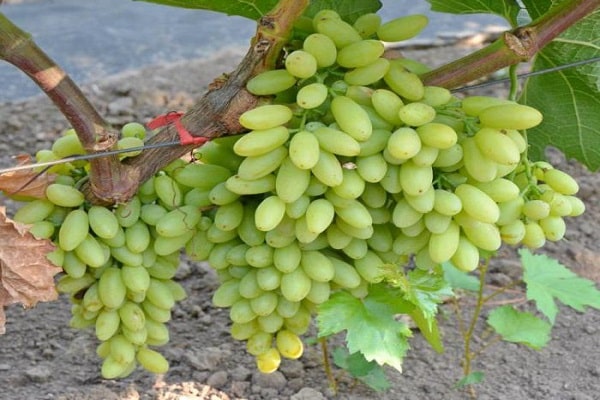
To prepare for winter, the shoots are removed from the supports and laid horizontally. Some gardeners form a protective layer of 20 cm from moss, fallen leaves or sawdust. Others are additionally covered with triangular structures or agrofiber on arcs. It is important for the successful wintering of a plant to prevent the effect of "overheating" of grape shoots.
Methods for increasing yields
It is important to follow the rules of cultivation prescribed for the variety in order to obtain decent yield indicators. The health of the plant and the quality of the berries depends on the sufficiency of nutrients. Timely pruning, removal of old and damaged shoots contributes to their correct distribution, which has a positive effect on the yield of the crop.
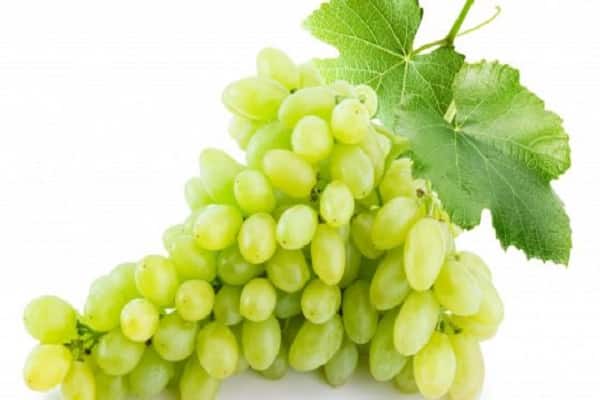
Fruit ripening and berry picking
The description of the variety indicates the ripening of its fruits after 125 days. Berries are harvested in September, depending on the growing region, this can be the first days of the month or its second decade. Bunches of grapes are able to stay on the shoots until the first frost.
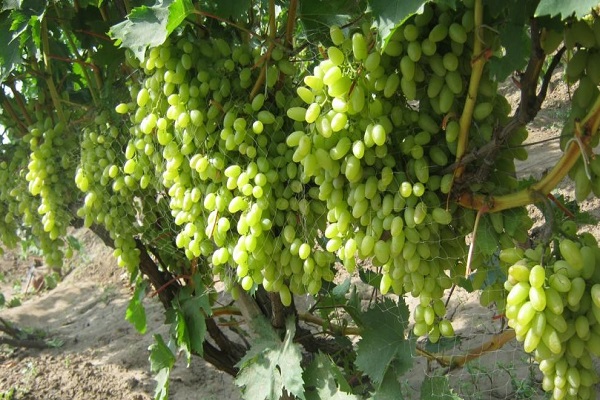
Useful properties, use of grapes Century
Since ancient times, grapes have been considered an excellent tonic and tonic. The product has a positive effect on the composition and properties of blood, therefore, with regular use of berries, there is a positive effect on the bone marrow and the circulatory system. A glass of juice can replenish the potassium deficiency and the daily intake of vitamin B.
Fresh grapes are used for making juices, muesli, fruit salads and desserts. A feature of the Century variety is the versatility of its use; it is considered an ideal raw material for making raisins.

